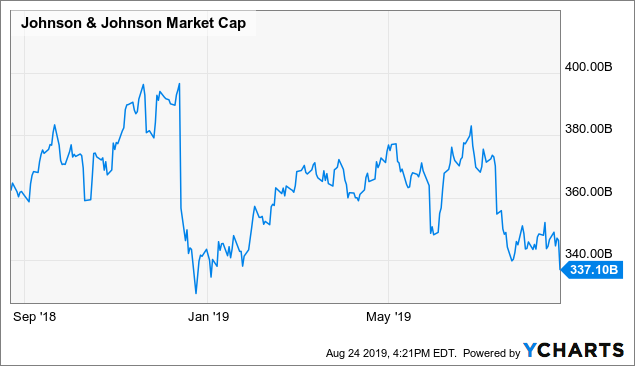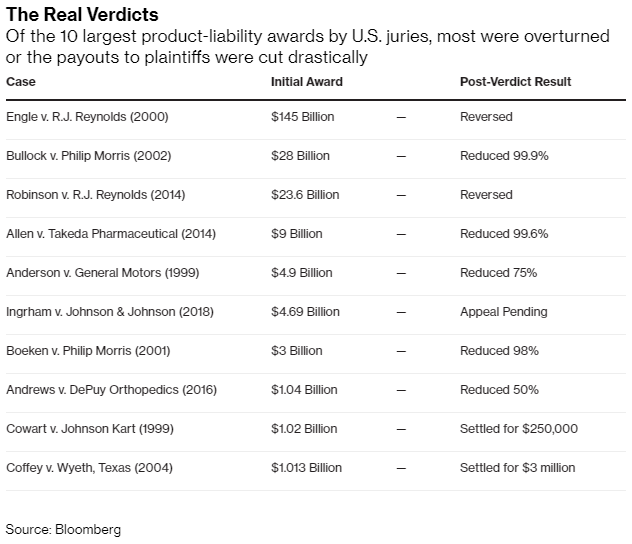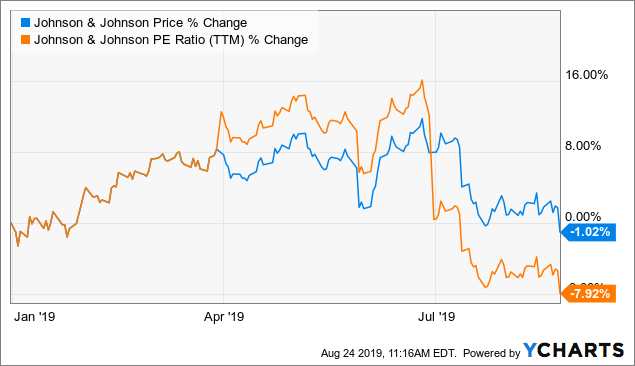It's safe to say that Johnson & Johnson (NYSE:JNJ)) has lagged the S&P 500 considerably so far in 2019. The company is in the midst of facing financial and reputational damages due to litigation pertaining to both its talcum baby powder, which is alleged in thousands of lawsuits to have contained traces of asbestos, and its opioid drugs Nucynta and Duragesic, which the state of Oklahoma claims helped to fuel a major public health crisis.
The company's stock has justifiably suffered under the weight of these uncertainties, and JNJ has increasingly fallen out of favor with an investor community that had formerly regarded the company as having the most pristine of reputations. As a result, the stock is now trading negative on the year, falling behind both the S&P index as well as its sector benchmark (Health Care Select Sector SPDR (NYSE:XLV)), in which it serves as the largest component.

But even with all of the uncertainty facing JNJ, it's clear that the market has been pricing in an extreme worst-case scenario for the company. The stock has experienced several 10%+ corrections over the last year and a half, with each of them in some way having to do with the litigation concerns being faced by the company. From a peak market capitalization of $397 billion, the decline in JNJ reflects a loss in market cap of approximately $60 billion.

This seems quite overdone, given that Bloomberg's worst-case estimate for potential talc settlements reaches $15 billion, and that the company seems to have a reasonable case against liability in the opioid case. Unlike peers Purdue Pharma and Teva Pharma Industries Ltd ADR (NYSE:TEVA), which chose to settle against similar accusations by the state of Oklahoma, Johnson & Johnson (NYSE:JNJ) has chosen to oppose the accusations head-on, claiming that its opioid products represented a small fraction of total opioid sales in Oklahoma. It's hard to quantify how much total opioid lawsuit damages could cost for the company; while Oklahoma is demanding $17 billion to be paid over 30 years, there are also several other states looking into lawsuits of their own. However, even if JNJ were to lose its trial against the state of Oklahoma, the actual payout would likely be nowhere near the $17 billion demanded, due to the high likelihood of a reversal or reduction upon appeal.

On top of all this, the company already has a considerable cash reserve of over $14 billion, as well as a AAA credit rating that enables it to borrow money on more advantageous terms (as if the cost of borrowing money wasn't already cheap). All-in-all, this combination of a lagging stock price coupled with what seems to be better-than-feared fundamentals provides an opportunity for long-term investors to build a position in JNJ at a discount.

A Strong Dividend At A Reasonable Valuation
Throughout the duration of JNJ's underperformance, the stock has experienced a steady increase in its dividend yield. Since the start of 2018 the stock's returns have essentially remained flat, yet company management has increased the quarterly dividend twice, first from $0.84 to $0.90 in mid-2018 and again from $0.90 to $0.95 in mid-2019.
Examining the stock's dividend yield history over the last three years, there have been four prior periods where JNJ's yield has fallen within the 2.8%-2.9% range: December 2016, January 2017, June 2018, and December 2018. Each of these instances ended up representing a bottom for the stock, and the fact that JNJ's yield is once again trading within this range leads me to believe that another bottom could be in the cards.

Additionally, it should be noted that JNJ is experiencing somewhat of a valuation contraction, which I attribute to a combination of company-specific litigation fears and industry-wide regulation fears. The stock currently carries a P/E ratio of 21.2. While this valuation may seem expensive at face value, it's not unreasonable for a blue-chip company of JNJ's caliber, with exceptional diversification across the health care industry, a solid international presence, high-quality management, and a consistent history of growth with regards to revenues, earnings, and dividends. And taking into consideration that JNJ has historically traded at a mid-20s multiple on earnings, one can reach the conclusion that the stock is cheap relative to past valuations.

Conclusion
Despite what I view as quality fundamentals for Johnson & Johnson, I would be wary of adding shares prior to Monday's upcoming opioid trial verdict; it's impossible to tell how JNJ will react to the news, and in an environment that's this volatile, the market isn't willing to show mercy to any stock with signs of weakness. But for investors seeking high-quality exposure to the health care sector, Johnson & Johnson presents a strong long-term buying opportunity. I believe that the litigation concerns around the company's talc and opioid products are real but overblown, and that investor panic has provided a chance to take advantage of an outsized dividend at a deflated valuation.
